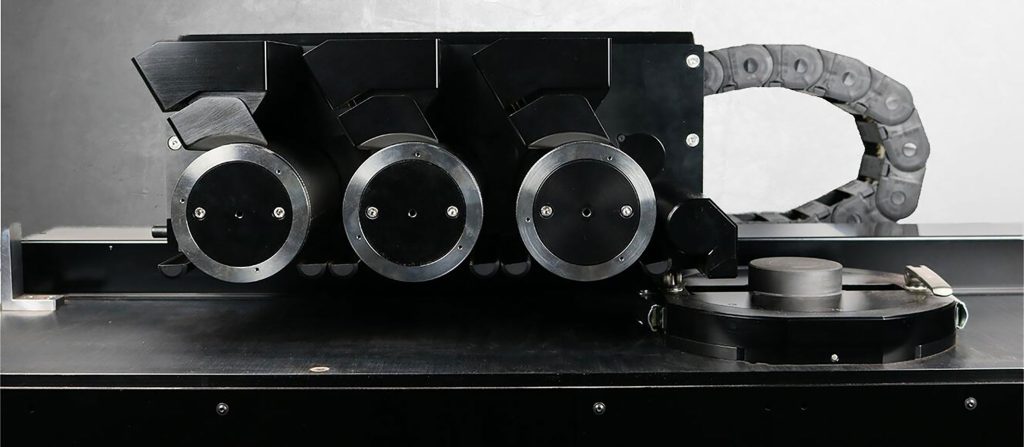Schaeffler Group, a high-precision component and system manufacturer. Desktop Metal, a Massachusetts-based manufacturer of metal 3D printers, has acquired Aerosint SA, a Belgian developer of recoater systems.
Founded in 2016, Aerosint’s patented Selective Powder Deposition (SDP) technology enables the simultaneous 3D printing of multiple materials, optimizing powder efficiency, cost and part throughput gains. The Schaeffler Group is hoping that this acquisition will improve its market position in the additive manufacturing industry.
Aerosint SA will be renamed to “Schaeffler Aerosint SA” as part of the deal and will be integrated into Schaeffler Group as an additional location for Schaeffler Special Machinery.
Desktop Metal Group and Schaeffler Group are not disclosing the financial details.
“Schaeffler Aerosint SA offers the first industrial solution for simultaneous, metallic multi-material printing. This expertise, combined with our high level of industrialization competence and decades of know-how in innovative production technologies, will give us a decisive market advantage,” commented Andreas Schick, Chief Operating Officer at Schaeffler AG. “The acquisition is an important milestone in the industrial use of metal-based additive manufacturing processes in the area of Industry 4.0.”
Schaeffler announced also that it will continue to collaborate with Desktop Metal in the areas of toolless manufacturing and multi-material 3D printer technologies.
“With Schaeffler, we have an international partner with a high level of technology expertise and a clear roadmap for commercializing the SPD technology with laser-based systems,” explained Ric Fulop, Desktop Metal’s Founder and CEO. “We will continue to collaborate on the various possibilities for using this technology in Desktop Metal binder jetting systems in the future.”
Aerosint’s multi-material 3D printing offering
Aerosint’s proprietary SPD technology is a novel powder re-recoating system, capable of depositing two or more powders into multi-material layers. This deposition is selective in that only the materials required are deposited, which reduces material waste.
Multiple materials are kept separate during 3D printing, and are deposited by “recoaters.” This process 3D prints components at lateral powder pixel resolutions as high as 300 µm. SPD technology works with ceramics, metals, polymers and metal alloys.
Desktop Metal acquired Aerosint in 2021. At the time, it was hoped that this partnership would advance Desktop Metal’s acquisition-based ‘AM 2.0’ strategy, and unlock new applications for its existing technology.
The company’s recent decision to sell Aerosint follows the termination of Stratasys’ deal to acquire Desktop Metal last month. Following the collapse of this proposed merger, Fulop outlined that Desktop Metal’s plans to “lower operating costs” and “generate revenue” remain on track.
Schaeffler Special Machinery will now incorporate Aerosint’s SDP technology into its new multi-material 3D printing system, which will be available from 2024.
“By integrating this key future technology, Schaeffler Special Machinery, as a partner for production excellence, will be able to offer its customers a more diversified portfolio of systems, particularly for the manufacturing and medical technology sectors,” stated Bernd Wollenick, Senior Vice President Schaeffler Special Machinery.

Advances in Multi-material 3-D printing
Multi-material additive manufacturing is a field that continues to grow. Lithoz announced its new CeraFab Multi 2M30LCM 3D printer at Formnext in 2023. The new multi-material 3-D printer, which is capable of 3D printing in two different material layers within one layer, can be used to create highly complex and multifunctional parts.
Earlier this year, it was announced that scientists from Edinburgh’s Heriot-Watt University have developed a new method that uses near-infrared (NIR) light to 3D print complex structures with multiple materials.
The team led by Dr. Jose Marques-Hueso modified stereolithography (3D printing) to allow for greater multi-material integration. Scientists claim this new method is targeted at applications in health and electronics.
Scientists from Nanyang Technological University Singapore, the Singapore Centre for 3D Printing and Japanese electronics company Panasonic have recently developed a multi-material electronic 3D printer. This new 3D Printer aims to meet the market demand for wearable and flexible electronic devices using high-power multi-wavelength lasers.
“Our project aims to find a way to 3D print new materials like organic polymers and carbon-based materials like graphene, which has properties that allow them to be printed or coated onto flexible substrates like plastics or fabrics, creating flexible and stretchable circuits,” explained Associate Professor Murukeshan Vadakke, from NTU School of Mechanical and Aerospace Engineering (MAE) and SC3DP.
Subscribe to our Newsletter 3D Printing Industry News Follow us on Twitter to stay up-to-date with the latest 3D print news. You can follow us on TwitterLike our Facebook Subscribe to our page and receive updates 3D Printing Industry YouTube Channel to access exclusive content.
You can find out more about the industry by visiting their website. You can visit the website to learn more about additive manufacturing. 3D Printing Jobs Browse a range of job opportunities and jumpstart your career.
Featured image shows Schaeffler technicians working on the company’s machinery. Photo via Schaeffler.


